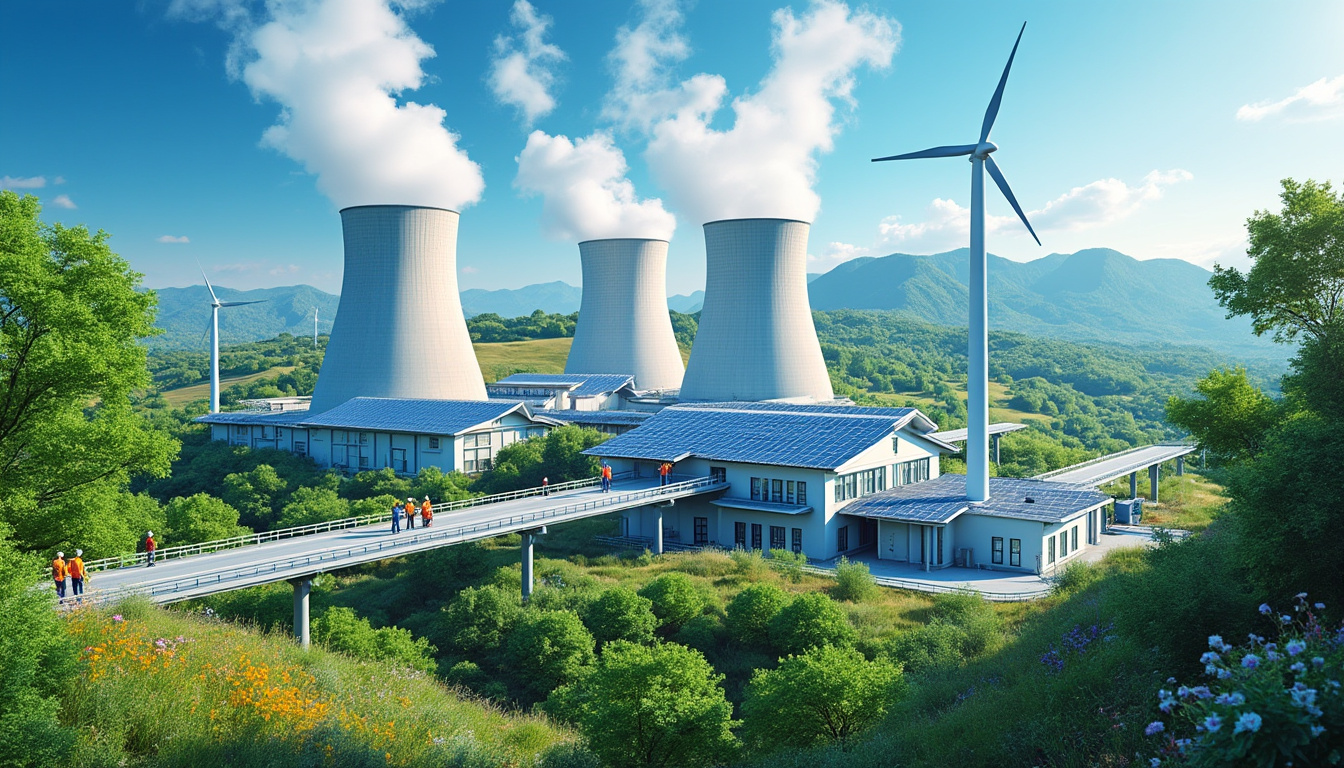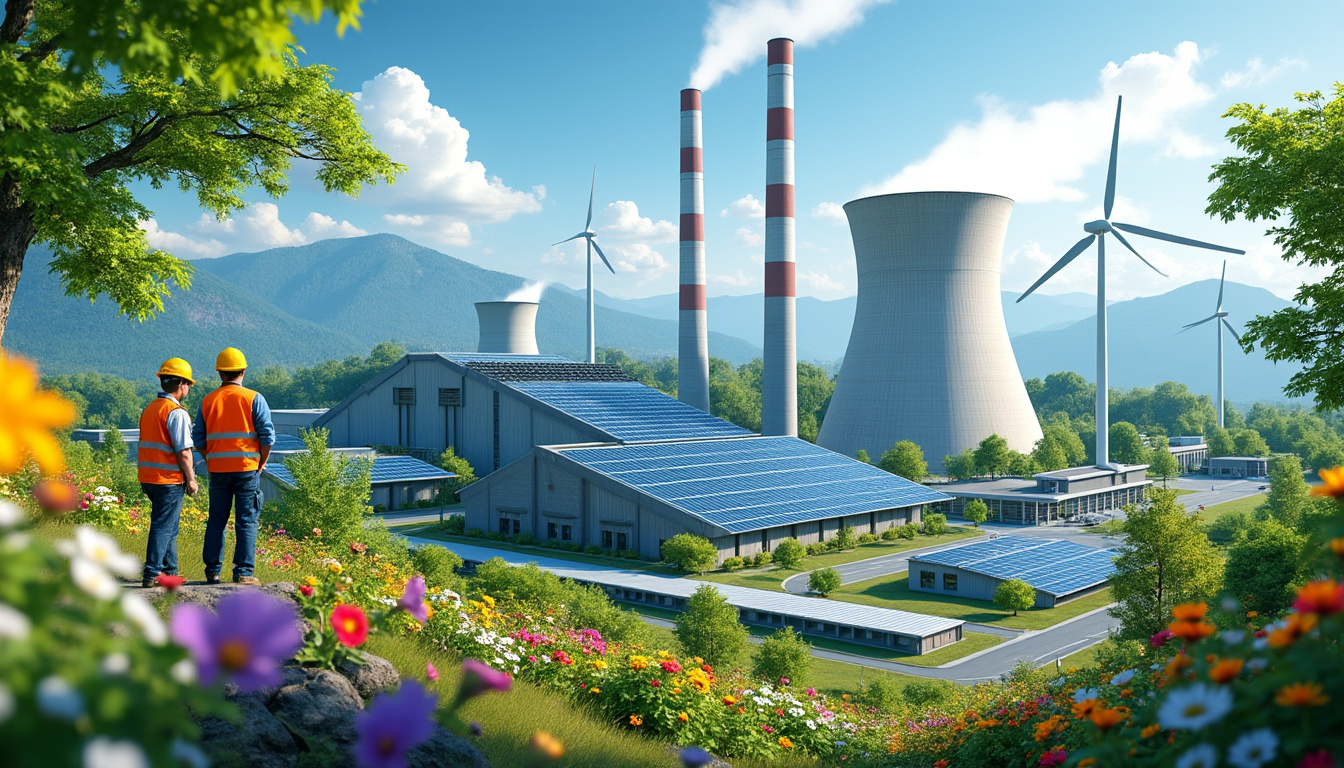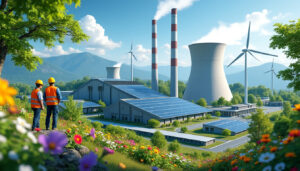Discover our commitment to your digital experience. Through cookies and data, we are building a platform that meets your needs. Learn how we are constantly optimizing our services to provide you with the best.
We monitor interruptions to ensure the reliability of our services and protect against spam, fraud, and abuse. Analyzing audience engagement and site statistics allows us to understand how our services are used and improve their quality. By opting for “Accept all,” you authorize us to develop new services, measure the effectiveness of advertising, and display personalized content based on your preferences. If you choose to “Reject all,” your data will only be used to provide non-personalized content, based on your current activity and general location.

Coal, an iconic energy source of the industrial revolution, remains today a major component of our energy mix. However, in the face of current climate and environmental challenges, it is imperative to rethink our dependence on this resource. How can we reconcile coal use with sustainable development? This article explores ways for a more responsible and innovative exploitation of coal.
Why reinvent our dependence on coal?
Coal is one of the most used energy sources in the world, accounting for a significant share of global electricity production. Despite its advantages in terms of cost and availability, its use poses serious environmental problems, notably emissions of carbon dioxide and other air pollutants. These emissions contribute to global warming and the degradation of air quality, affecting public health and ecosystems.
In addition, dependence on coal exposes economies to fluctuations in energy markets and international pressure to reduce greenhouse gas emissions. Therefore, reinventing our use of coal is not only an environmental issue but also an economic and social one. It is about finding a balance between current energy needs and preserving resources for future generations.
What are the alternatives for sustainable use?
To ensure a more sustainable use of coal, several alternatives and innovative technologies can be considered. One of the most promising solutions is carbon capture and storage (CCS), which allows for capturing CO2 emitted during the combustion of coal and safely storing it in deep geological formations. This technology can significantly reduce the carbon footprint of coal-fired power plants.
Improving energy efficiency
Increasing the efficiency of coal plants is also an important avenue. Technologies such as combined cycle plants can improve thermal efficiency, thus reducing the amount of coal needed to produce the same amount of energy. This reduction in consumption directly contributes to lowering greenhouse gas emissions.
Moreover, transitioning to complementary energy sources, such as natural gas or renewable energies, can alleviate exclusive dependence on coal. Integrating these sources into the energy mix allows for a gradual and less disruptive transition while maintaining energy security.
How can coal be used responsibly?
A responsible use of coal involves not only the adoption of clean technologies but also a rigorous management of social and environmental impacts. This includes controlling pollutant emissions, restoring mining sites, and supporting local communities dependent on the coal industry.
Furthermore, promoting research and development in the field of clean technologies is essential. Investing in innovative solutions can transform coal into a less polluting and more beneficial resource for the economy. For example, developing low-emission materials or using coal in sustainable industrial processes are avenues to explore.
What are the challenges and solutions for an energy transition?
The transition to a more sustainable use of coal is not without challenges. The main obstacles include the high cost of clean technologies, resistance to change from traditional industries, and political constraints. However, several solutions can be implemented to overcome these barriers.
One of the major levers is government support through subsidies and tax incentives for clean technology projects. These measures can accelerate the adoption of sustainable solutions by reducing initial costs for businesses. Additionally, raising awareness and training coal sector workers is crucial to ensure a just and equitable transition.
Furthermore, international collaboration plays a key role in sharing best practices and technological innovations. Partnerships between countries can facilitate access to necessary resources and promote high environmental standards globally.
What role does technological innovation play in coal sustainability?
Technological innovation is at the heart of the necessary revolution to make coal use more sustainable. Advances in the fields of carbon capture, advanced materials, and artificial intelligence allow for a complete rethinking of coal’s value chain.
For example, using artificial intelligence to optimize combustion and emissions management processes can lead to significant reductions in coal’s environmental footprint. Additionally, new innovations in materials allow for the creation of more resilient and less polluting infrastructures.
How to engage local communities in a responsible use of coal?
Engaging local communities is essential to ensure a responsible and sustainable use of coal. This involves transparent communication, participation in decision-making, and investment in local development. Communities should be informed about the impacts and potential benefits of energy projects, and have a voice in decision-making processes.
Moreover, developing training and retraining programs can help workers adapt to new technologies and the demands of the sustainable energy market. By integrating the needs and aspirations of local communities, the energy transition becomes an opportunity for shared growth and strengthening the social fabric.
What are the success stories in reinventing coal use?
Several initiatives around the world illustrate how innovative and sustainable coal use is possible. For example, in Germany, some coal plants have integrated carbon capture and storage technologies, significantly reducing their emissions. Likewise, in Japan, pilot projects are exploring the use of coal in circular industrial processes, minimizing waste and maximizing efficiency.
These examples demonstrate that, despite the challenges, it is possible to reinvent our energy dependence on coal by adopting innovative approaches and investing in clean technologies. The experience gained from these projects can serve as a model for other countries and industries seeking to reconcile energy needs and ecological imperatives.
What future for coal in the global energy landscape?
The future of coal will largely depend on our collective ability to innovate and adopt sustainable practices. If clean technologies continue to develop and become more mainstream, coal could evolve into a more environmentally friendly resource, playing a transitional role toward renewable and less polluting energy sources.
However, this transition requires strong political will, substantial investments, and increased international collaboration. The stakes are high, but the potential benefits in terms of emission reductions and energy security justify the necessary efforts.
How to measure the success of sustainable coal use?
To evaluate the success of sustainable coal use, it is crucial to establish clear and measurable indicators. Among these indicators, we can cite the reduction of CO2 emissions, improvement of air quality, energy efficiency of power plants, and the level of involvement of local communities.
Regular audits and transparent reporting systems allow for tracking progress and adjusting strategies accordingly. Furthermore, adopting international standards and participating in global initiatives can help harmonize efforts and ensure that the practices implemented meet the highest environmental requirements.
Ultimately, the success of sustainable coal use will be measured by our ability to reduce our environmental impact while maintaining reliable and accessible energy production. It is a complex challenge, but achievable through innovation, cooperation, and a shared vision for a greener energy future.










